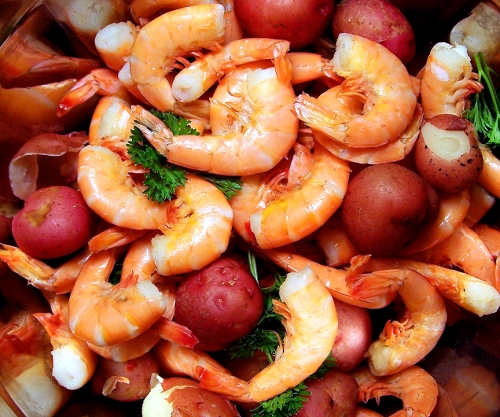In 1985, Craig Claiborne visited Bill Neal’s restaurant, Crook’s Corner, in Chapel Hill, North Carolina, and after sampling many dishes, asked Neal to prepare shrimp and grits for him in his kitchen the next morning.
Claiborne soon published the recipe in the New York Times, and the national craze for shrimp and grits was on. While the recipe has been replicated—usually with disappointing results—in restaurants across the country, this is Neale’s original:
6 cups cooked grits with cheese (I use a white cheddar)
Tabasco sauce
Freshly grated nutmeg
White pepper
1 pound (454 g) fresh shrimp
6 slices bacon
Peanut oil
2 cups sliced mushrooms
1 cup finely sliced scallions
1 large garlic clove, peeled
4 teaspoons lemon juice
Tabasco sauce
2 tablespoons fresh, chopped parsley
Salt and pepper
Season grits to taste, but lightly, with Tabasco, a very little nutmeg, and white pepper. Hold in a warm place or in the top of a double boiler over simmering water. Peel the shrimp, rinse, and pat dry. Dice the bacon and sauté lightly in the skillet. The edges of the bacon should brown, but the bacon should not become crisp. Add enough peanut oil to the bacon fat in the skillet to make a layer of fat about a quarter of an inch deep. When quite hot, add the shrimp in an even layer. Turn the shrimp as they start to color, add the mushrooms, and sauté about 4 minutes. Turn occasionally and add the scallions. Add the garlic through a press and stir around. Then season with lemon juice, a dash or two of Tabasco, and parsley. Add salt and pepper to taste. Divide the grits among four plates. Spoon the shrimp over and serve immediately.







